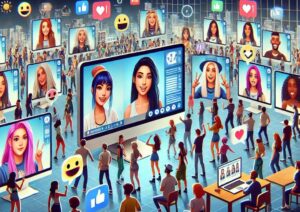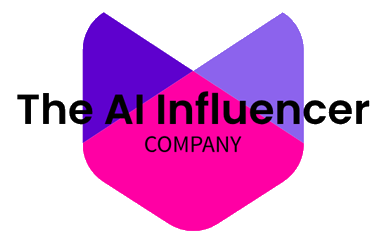The use of AI-generated influencers in advertising has exploded in recent years. However, the current landscape of CGI and virtual influencers perpetuates a lack of diversity and representation.While often young, thin, able-bodied, and white, AI presents an opportunity to promote inclusion.
This article will explore the challenges around homogenous AI influencers, the potential of AI to increase diversity in advertising, and recommendations for developing ethical and inclusive AI influencers.
The Popularity and Homogeneity of Current AI Influencers
CGI models and virtual avatars like Lil Miquela have become hugely popular on social media and with brands. The startup Brud alone is worth an estimated $125 million. However, these AI influencers reinforce exclusionary beauty ideals and norms.
- Dominated by young, thin, cisgender white women.
- Perpetuates conventional beauty standards of thinness, youth, able-bodiedness.
- Lacks diverse representation across races, ethnicities, genders, ages, and abilities.
- The most popular AI influencers are Henson Robotics’s Sophia, Xiaoice from Microsoft, Imma from Aww Inc., Lil Miquela, and Blawko from Brud, and Virtual Beings’ Ruby Rose.
- These AI influencers have amassed millions of social media followers and work with major brands like Prada, Dior, and Calvin Klein.
- But they represent a narrow sliver of society and set a homogenized standard for beauty and inclusion.
This lack of diversity stems from issues like:
- AI systems and engineering teams embed biases in influencers.
- Homogenous testing groups that do not represent diverse populations.
- Limited focus on inclusion in the design process of influencers.
- Prioritizing aspirational beauty ideals thought to drive follower counts.
AI influencers lack representation across the full spectrum of races, ethnicities, genders, sexual orientations, ages, abilities, and body types. This homogeneity represents missed opportunities for more inclusive storytelling and messaging.
Criticisms and Impact of Uniform AI Influencers
Experts have increasingly critiqued the lack of diversity and representation in the current landscape of AI influencers:
- The homogeneity reflects the broader lack of diversity in AI and technology development teams.
- It perpetuates exclusionary beauty ideals that have long been prevalent in fashion modeling and advertising
- AI influencers are not presenting consumers with a full, representative range of backgrounds.
- There is a sense that brands are prioritizing aspirational, idealized beauty over real inclusion.
Scholars have pointed out that the most popular AI influencers present a narrow vision of beauty and humanity. Marginalized groups cannot relate to the homogenous AI influencers dominating social media.
The impact is that diverse audiences for racial minorities in LGBTQ+ communities with those with disabilities are not seeing themselves represented. AI influencers present a missed opportunity for empowerment for groups that have historically lacked representation.
How AI Could Promote Diversity in Advertising
AI has unique capabilities that, if applied responsibly, could enable a step-change in diverse representation in advertising:
- Customizable Features – AI lets users customize appearances, backgrounds, and identities in a hyper-customizable manner. Users can customize skin tones, facial features, hair styles, and abilities.
- Reflecting Diversity – AI influencers could be designed from the ground up to authentically reflect the full diversity of races, ethnicities, genders, sexual orientations, ages, abilities, body types and more.
- Niche Audience Targeting – Granular customization can allow AI influencers to connect specifically with underserved, marginalized or minority consumer groups. AI could bring representation to subcultures.
- Inclusive Messaging – AI influencers could move beyond surface-level traits to promote empowering, thoughtful messaging tailored to marginalized communities.
- Diverse Creators – Inclusive engineering and design teams could develop authentic influencers reflecting their experiences and communities.
- Responsible Storytelling – AI enables crafting responsible narrative arcs that resonate across diverse communities and for social good.
- Feedback Loops – AI systems can continue learning from minority groups to improve representation. They can add new identities over time.
In summary, applied conscientiously, AI could be a potent positive force for delivering the representation minority groups have lacked – visually and in messaging that empowers communities. It requires a rethinking of current homogenous approaches to AI influencer design.
Case Studies of Diverse AI Influencers
While most AI influencers perpetuate conventional beauty standards, some stand out for promoting diversity:
Cultural Heritage & Ethnic Diversity
- Shudu Gram – Celebrated as the world’s first digital supermodel, Shudu draws inspiration from African heritage, emphasizing beauty in diversity.
- Lil Miquela – A Brazilian-American virtual influencer, Lil Miquela advocates for LGBTQ+ rights and racial equality, blending cultures through her digital existence.
Gender Diversity & LGBTQ+ Advocacy
- Noonoouri – A fashion-forward avatar, Noonoouri supports LGBTQ+ rights and often collaborates with designers championing inclusivity.
- Seraphine – League of Legends’ virtual star, Seraphine uses her platform to promote self-love and acceptance across gender spectrums.
Body Positivity & Inclusivity
- Bermuda – Known for her journey of self-discovery and transformation, Bermuda engages with themes of body positivity and self-acceptance.
- Imma – A Japanese virtual model, Imma champions diversity in beauty standards, promoting a broad spectrum of beauty ideals.
These AI influencers demonstrate the power of thoughtful representation of diverse backgrounds and experiences. They offer inspirational examples of how AI can promote inclusivity.
Guidance for Developing Ethical, Diverse AI Influencers
To realize the potential of AI influencers for increased representation and empowerment, brands should:
- Diverse Teams – Prioritize diversity in engineering and design team building influencers. Include the voices that can authenticate representation.
- Community Consultation – Proactively consult underrepresented groups and inclusion advocates during influencer development. Listen to lived experiences.
- Responsible AI – Leverage AI capabilities to responsibly reflect a broad spectrum of races, genders, ages, abilities, etc. Consider both visuals and values.
- Thoughtful Storytelling – Ensure narrative arcs, messaging and content resonate authentically with each community represented. Avoid tokenization.
- Accessibility – Consider those with disabilities throughout the design process. Enable technologies like screen readers.
- Ongoing Learning – Create feedback loops where AI influencers dynamically respond to input from minority groups over time.
- Social Impact Goals – Set inclusive representation goals to achieve social impacts. Track progress transparently.
These principles and brands have an opportunity to develop AI influencers that finally realize the potential of AI for inclusive storytelling, empowerment and social good.
Predictions on Advertising with AI Influencers
As AI influencer usage grows, we can make some educated predictions about how this technology will transform marketing and media:
- AI influencers will continue gaining popularity, with some forecasting the market reaching $13.8 billion by 2028. Their cost-effectiveness and scalability will likely accelerate adoption.
- Hyper-realistic AI may spark controversy over truthfulness as computer-generated personalities become indistinguishable from humans. Calls for transparency will increase.
- Diverse representation could expand rapidly as customizable personas enable targeted local influencers. But risks around misrepresentation persist.
- Interactive AI influencers on voice assistants and chatbots will create conversational ads. They may know consumer interests and habits to tailor pitches.
- Regulatory bodies will formalize rules around ethical development of AI personas. Standards for transparency, safety and consent will emerge.
- Hybrid human-AI collaborations become the norm, with artificial intelligence complementing human creativity.
- Specialized AI influencers may move beyond marketing into roles like healthcare advice, financial guidance, education and more.
The landscape in 5-10 years will depend on how technology develops and is applied. However, responsible harnessing of AI influencers has the potential to shift advertising. The push for diversity, transparency and authenticity will shape their trajectory.
Final Thoughts
The current landscape of AI influencers is remarkably homogeneous, with a few notable exceptions. But this only scratches the surface of what inclusive representation through AI could resemble.
There is tremendous untapped potential for AI influencers that authentically reflect the full diversity of humanity. The possibilities are endless if the AI community commits to inclusive innovation.
Diverse AI influencers, designed ethically, can reshape advertising and bring marginalized voices to the mainstream. The time has come to leverage AI as a positive force for representation, social good and unity across all people.




